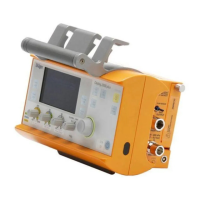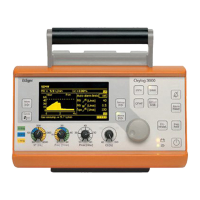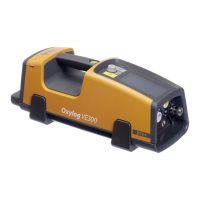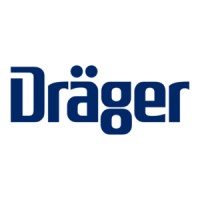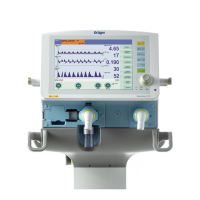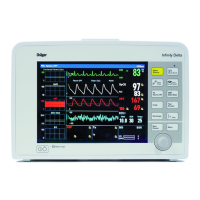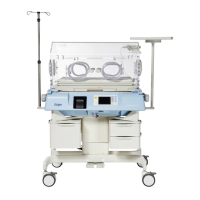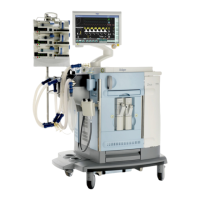Technical data
152 Instructions for use Oxylog 3000 plus SW 1.n
Electromagnetic environment
This device may only be used in environments
specified in section "Environments of use"
on page 14.
Recommended separation distances
from wireless communication devices
To ensure that the functional integrity of this device
is not compromised, there must be a separation
distance of at least 1.0 m (3.3 ft) between this
device and wireless communication devices.
Emissions Compliance
Radiated emissions Class B, group 1 (30 MHz to 1 GHz)
Conducted emissions Class B, group 1 (150 kHz to 30 MHz)
Harmonic emissions
(IEC 61000-3-2)
Class A
Voltage fluctuations / flicker (IEC 61000-3-3) Fulfilled
Immunity against Test level and required electromagnetic envi-
ronment
Electrostatic discharge (ESD)
(IEC 61000-4-2)
Contact discharge: ±8 kV
Air discharge: ±15 kV
Fast transient electrical disturbances
(bursts) (IEC 61000-4-4)
Power cable: ±2 kV
Longer signal input lines/output lines: ±1 kV
Impulse voltages (surges) (IEC 61000-4-5) Voltage, external conductor – external conductor:
±1 kV
Voltage, external conductor – protective ground
conductor: ±2 kV
Magnetic fields at mains frequency (IEC 61000-4-8)
50 Hz: 30 A/m
Voltage dips and short interruptions in the supply
voltage (IEC 61000-4-11)
Voltage dips of 30 % to 100 %, 8.3 ms to 5 s, differ-
ent phase angles
Radiated high-frequency disturbances
(IEC 61000-4-3)
26 MHz to 1 GHz: 30 V/m (ISO 10651-3)
80 MHz to 2 GHz: 10 V/m (EN 794-3)
80 MHz to 2.7 GHz: 3 V/m
Conducted high-frequency disturbances
(IEC 61000-4-6)
150 kHz to 80 MHz: 3 V, ISM bands: 6 V
Electromagnetic fields in the vicinity of wireless
communication devices
Various frequencies from 385 MHz to 5785 MHz:
9 V/m to 28 V/m
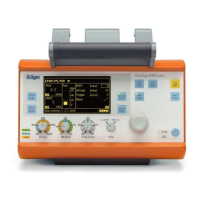
